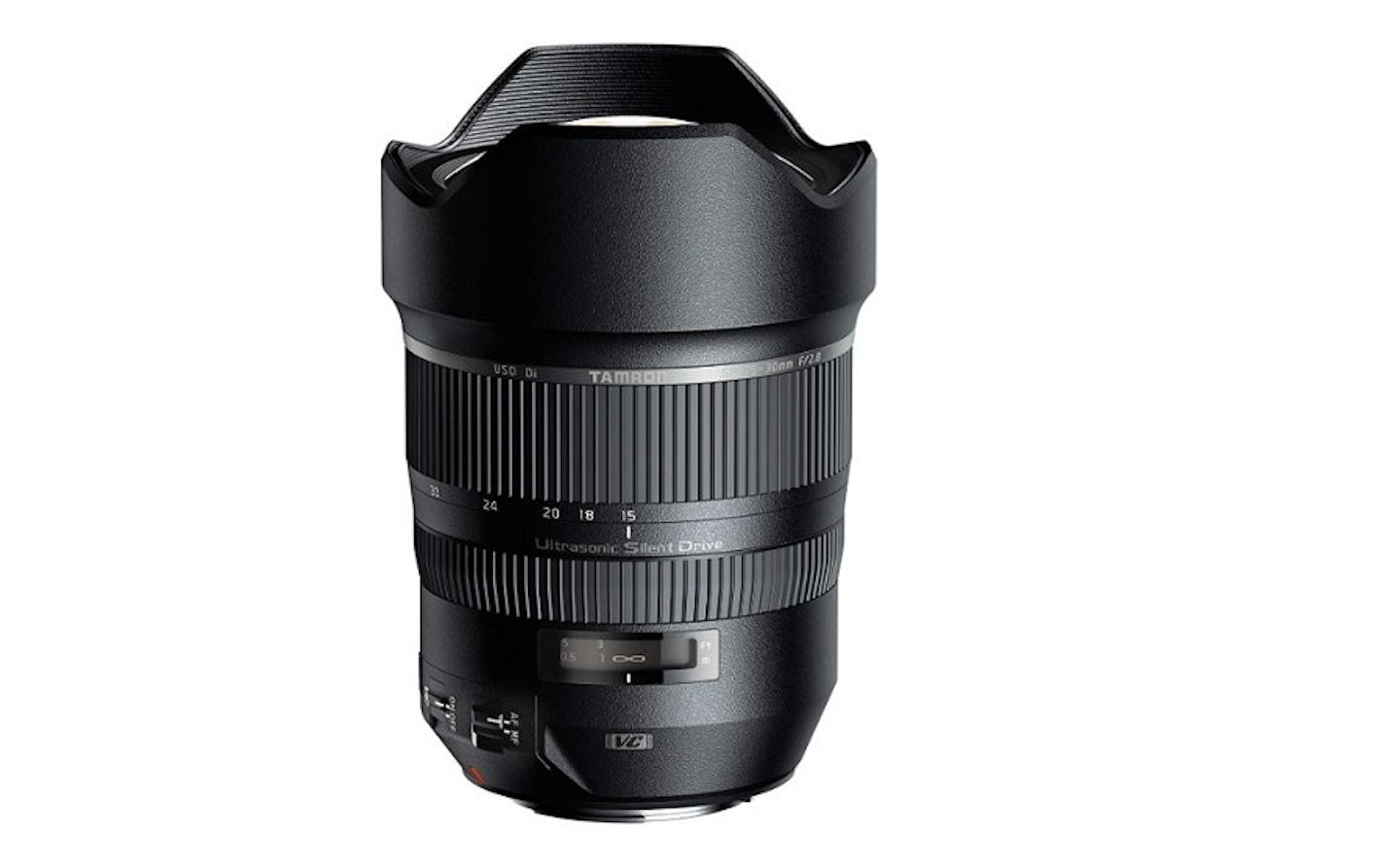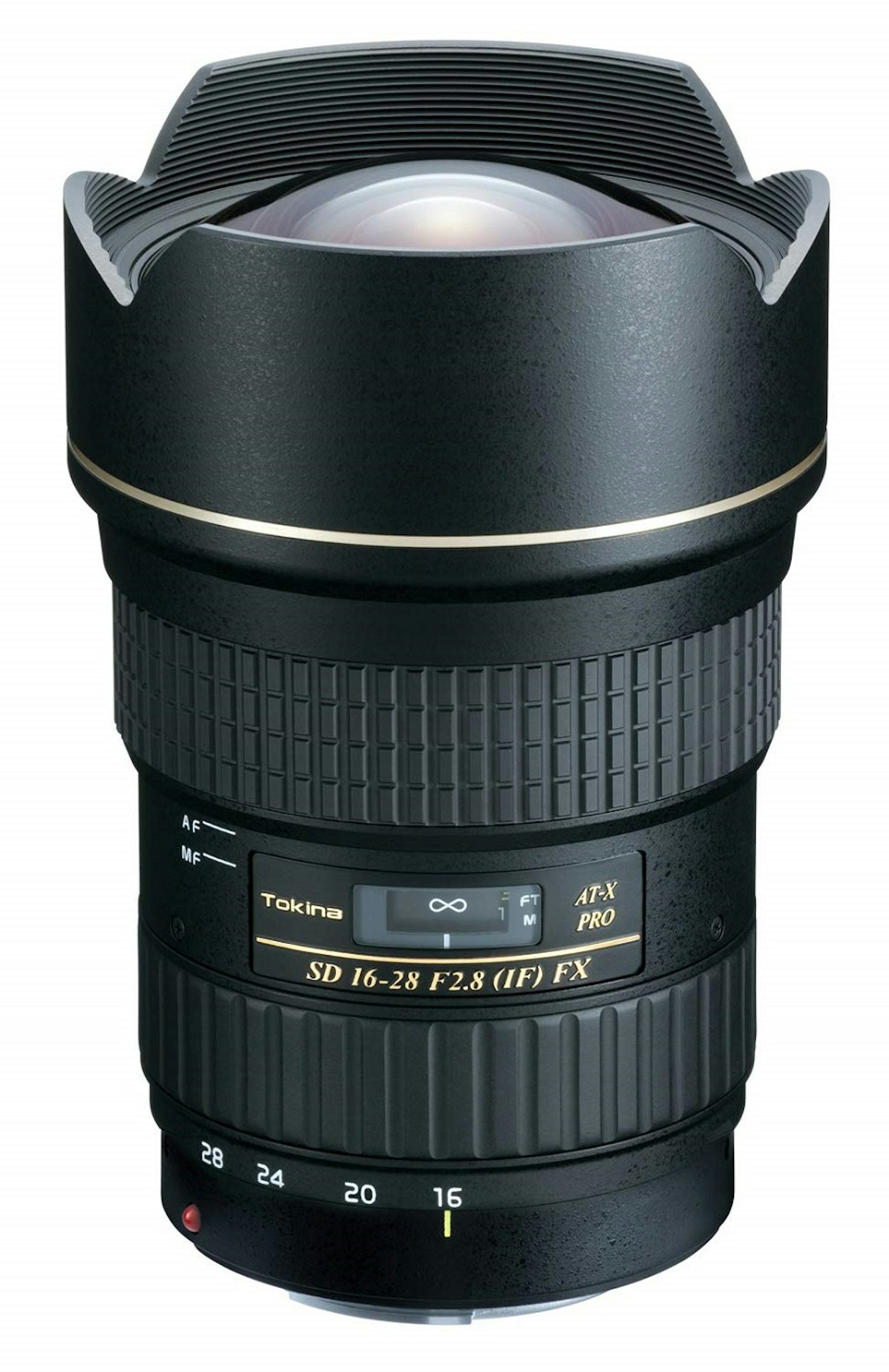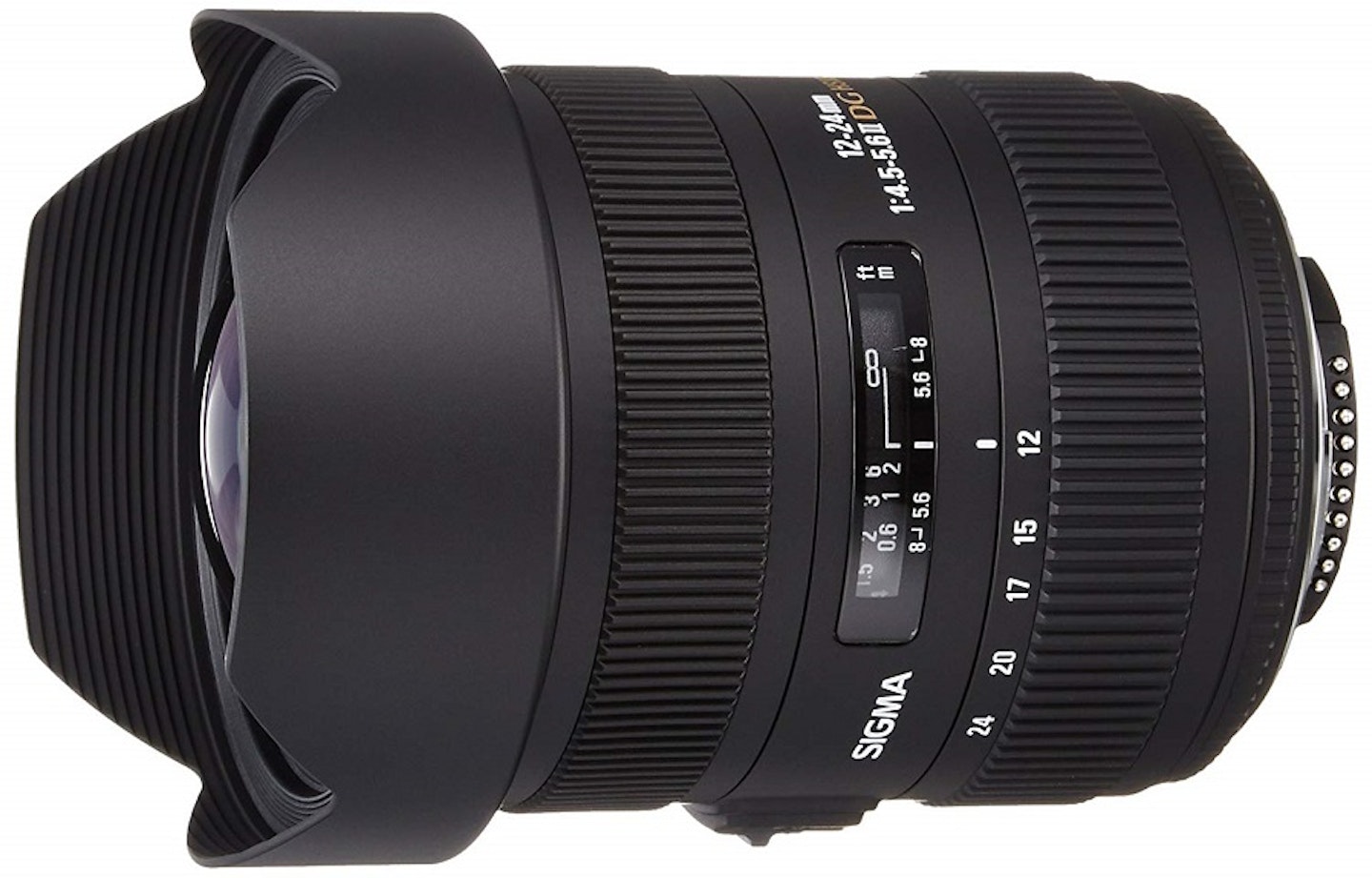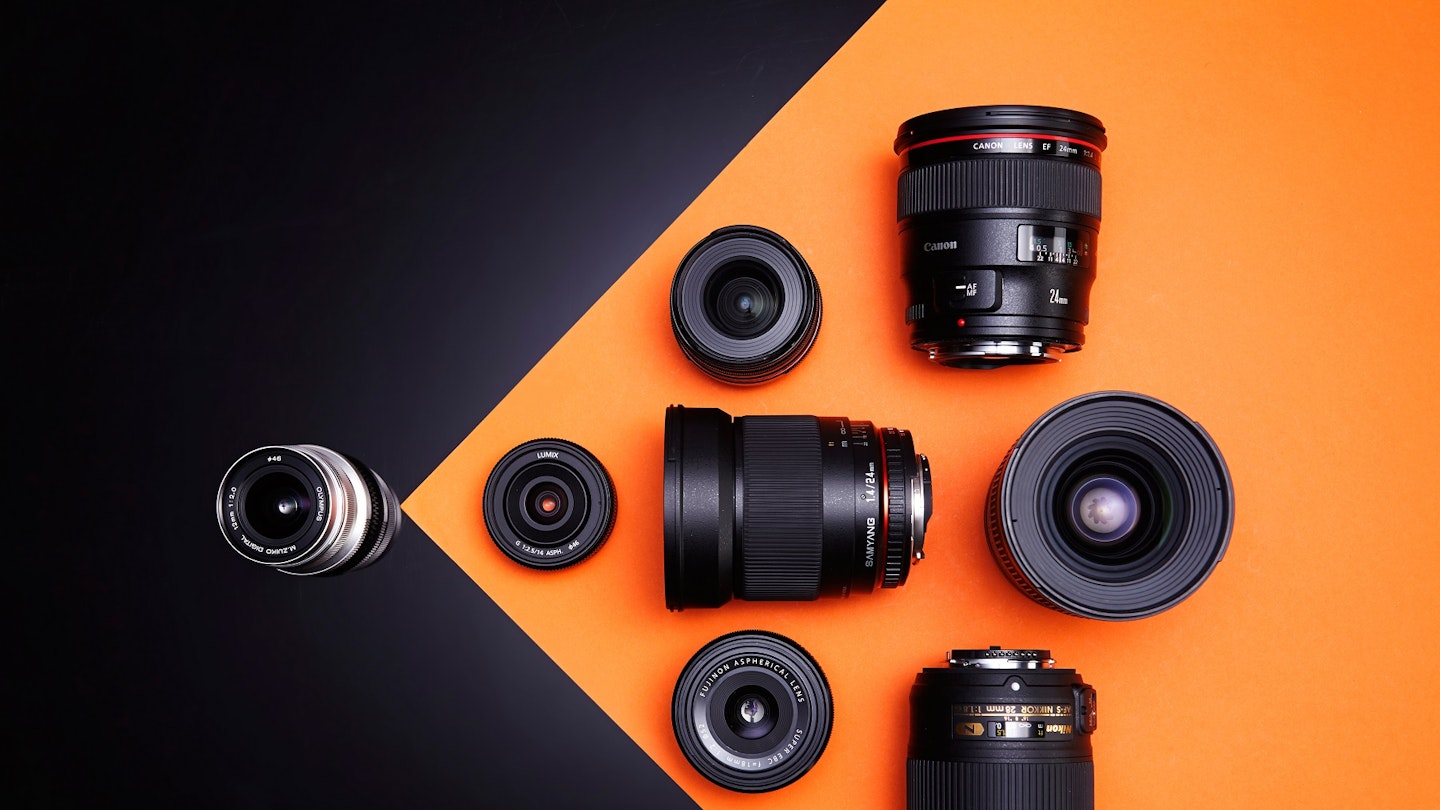With their short focal lengths that produce expansive angles of view, ultra-wide lenses are the perfect tool for dramatic imagery. From sweeping landscape vistas to immersive in-situ portraiture, they open up opportunities for shots that simply couldn’t be captured in any other way. Helping to increase the impression of both depth and scale, their distinctive distortion gives photos a stylish edge that sets them apart from images taken at longer focal lengths.
While some may see them as a specialist piece of equipment, there are very few genres of photography where the creative use of wide-angles hasn’t led to some of its most popular creations. With that in mind, everyone should consider investing in a wide-angle optic for their kitbag.
We reviewed three of the best third-party models available to discover which offered the best combination of performance, features and value. All three of our chosen optics are designed for full-frame sensors, but could be used with compatible APS-C bodies (albeit with the effect of sensor-crop which reduces their angle of view), making them a solid investment. Read on to find out which lenses grabbed our attention...
The best full-frame wide-angle lenses
 1 of 3
1 of 3Tamron 15-30mm f/2.8 SP Di VC USD
Offering more than double the light gathering ability of the Sigma with its constant f/2.8 aperture, and a 15-30mm focal length that betters the Tokina at both ends of its range, this Tamron provides a 110°-71° angle-of-view. On an APS-C body this focal length is roughly equivalent to 23-45mm. It's also the only lens featured to offer image stabilisation, which during our testing allowed shutter speeds around three stops slower than would otherwise be required to be used without camera shake.
While this feature is arguably more useful on telephoto lenses, for handheld shooting it will still be a highly welcome addition. This feature is turned on and off via a switch on the barrel. Available in Canon, Nikon and Sony mounts, the Tamron 15-30mm f/2.8 carries a premium over its rivals.
Powering this lens' focusing is an Ultra Sonic Silent Drive (USD), which lives up to its name with quiet operation, finding accurate focus faster than anything else in the group. AF/MF operation is selected via a switch on the side of the lens, while above it sits a distance window, and a smoothly rotating focusing ring. Manual-override of focusing is possible at any time, while the minimum focus distance of the optic is 28cm.
Larger and heavier than the other two lenses on test at 1.1kg and at 98x145mm (diameter x length), the Tamron 15-30mm f/2.8 would be better suited for use on larger DSLRs, rather than entry-level bodies. Constructed mainly from high quality plastics, it feels more rugged than the Tokina, and not dissimilar in terms of its build quality to the Sigma. It has a metal mount and a fixed lens hood that lacks a thread for filters.
Comprising 18 elements in 13 groups, the lens has nine diaphragm blades that control aperture, and features Tamron's BBAR (Broad-Band Anti-Reflection) and eBAND (Extended Bandwidth & Angular-Dependency) coatings to suppress reflections, ghosting and flare.
At 15mm the Tamron offers better quality images than either of the other two optics, capturing excellent levels of sharpness in the centre of the frame at f/2.8, and good levels at the edges. This gets even better at f/5.6-8 where sharpness is fantastic throughout the image, and remains impressive at narrower apertures. The lens displays reasonable signs of barrel distortion, as all the optics did at their shortest focal lengths, and some strong levels of chromatic aberration, although this could be removed.
Vignetting is reasonable and reduces quickly as the lens is stopped down. Set to 24mm the lens continues to outperform its competition, with excellent levels of sharpness wide-open once more in the centre of the frame. From f/4-8 this sharpness gets even better, hitting pleasing levels across the entire image. At this focal length, distortion is much better controlled and, while chromatic aberration is still present, it can be corrected.
The otherwise fantastic sharpness of the lens takes a bit of a knock at 28mm, softer across its aperture range than at other lengths, and more on par with the Tokina. Starting off usable and becoming good across the frame at f/5.6, it's a reasonable performance. At this length distortion is again controlled well, while chromatic aberration is at a similar level to shorter lengths.
This lens carries a heftier pricetag, but it outperforms its test rivals in features and image quality, making it a fantastic choice if it's within your budget.
Pros:
Image stabilisation
Excellent image quality
Cons:
More expensive than rivals
Large and heavy
 2 of 3
2 of 3Tokina 16-28mm f/2.8 AT-X PRO FX
With a fast constant aperture of f/2.8, the Tokina 16-28mm AT-X Pro FX makes stylishly shallow depths-of-field and faster low-light shutter speeds possible at a price that goes head-to-head with the Sigma 12-24mm. Its focal length is not quite as wide as the competition, but it still offers a dramatic angle-of-view that's perfect for landscapes. However, with an effective focal length of 24-42mm when mounted on an APS-C body, crop-sensor shooters may be better off looking elsewhere for their choice of ultra-wide.
Focusing is achieved via a 'Silent DC Motor with GMR sensor'. This system, despite its name, has a quiet but clearly audible whir that will draw more attention to the user than the other lenses reviewed. Like the Sigma, during our testing this lens found focus accurately, but not quite as quickly as some optics.
Uniquely, switching between MF/AF is achieved through a one-touch focus clutch mechanism, controlled by snapping the focusing ring up and down. While this operation is simple, it doesn't seem as refined as the focus mode switches found on the Sigma and Tamron. Beneath this ring is a window that displays the currently selected focus distance, and a wide zoom ring that provides slightly stiff control of focal length. Manual override of focus is not possible with this lens set to AF. Minimum focus distance is 28cm.
The mount of the Tokina is pleasingly metal, but the rest of its build feels somewhat more plasticky than the other two optics featured. While durable enough to take a few knocks, its finish is less refined. Weighing 950g and measuring 90x133mm (diameter x length), it's both heavier and larger than the Sigma, but remains more portable than the Tamron. Like all of the lenses featured it has a fixed hood that helps to protect the front element, but this one has no thread for attaching a filter. The lens is available in Canon and Nikon fits.
The Tokina 16-28mm has a 15-element in 13-group construction, multi-Layer lens coatings, and nine aperture blades for attractive bokeh. Set to 16mm the lens had some reasonably strong barrel distortion that's more noticeable than on the Sigma at the same length. Chromatic aberration is present, but very well controlled. With an aperture of f/2.8 there was softness across the frame, but the centre still offered a good level of sharpness. Vignetting was apparent, but subsided at narrower apertures. Hitting its sweet spot between f/5.6-8, centre sharpness improved to a very good level, although in the corners it remained poor. Beyond f/16 sharpness took a slight knock once more as diffraction set in.
At a length of 24mm control of distortion was much better – hardly visible at all. Chromatic aberration increased, but remained fairly mild. Wide-open at this length centre sharpness was good, but in the corners struggled. However, beyond f/5.6, this sharpness vastly improved, reaching impressive levels in the centre of the frame, and a good one at the edges.
At 28mm the lens' performance started poorly with sharpness across the image leaving much to be desired, and its corners almost unusable. But by f/5.6 this had been turned around again – the entire frame improving dramatically to offer very good levels of sharpness, maintained at narrower apertures.
Disappointingly, this lens doesn't put in its best performance until its longer focal lengths and apertures beyond f/4, limiting the appeal of its two main selling points.
Pros:
Great sharpness at narrower apertures
Cons:
Not as wide as rivals
Poor performance at f/2.8
 3 of 3
3 of 3Sigma 12-24mm f/4.5-5.6 II DG HSM
With the shortest focal length available in the trio of lenses on test, the Sigma 12-24mm f/4.5-5.6 allows images to be captured with an extremely wide 122°-84.1° angle-of-view. Available in Sigma, Nikon, Canon, and Sony fits, on an APS-C size body, it offers an effective length of 18-36mm, which is still pleasingly wide. Slightly cheaper than the Tokina 16-28mm, it's also the most affordable lens, but with the aperture range, it loses some ground on its rivals.
While the other optics featured both have a constant maximum aperture of f/2.8, the Sigma only manages f/4.5 at a focal length of 12mm, which narrows down further to f/5.6 by 24mm. While this is less likely to concern landscape fans, those users looking to take advantage of faster shutter speeds, or who sometimes shoot in low light, may be left disappointed.
Fitted with Sigma's Hyper Sonic Motor (HSM), focusing is silent, and while not blisteringly quick, it's responsive enough to avoid frustration. With a minimum focus distance of 28cm, the currently selected focus distance is displayed in a window on the lens' barrel. Full-time manual override of focusing is possible for total control, while an AF/MF switch is also present. Attached with its metal mount, the lens is manufactured from a mixture of quality-feeling metal and plastic parts. Weighing 670g and measuring 87x120mm (diameter x length), it's the most portable lens of the three.
The lens' focus and zoom rings sit on either side of the distance window and, while not the smoothest to operate, they do allow precise control. A fixed lens hood helps to protect the bulbous front element, and is complemented by a two-part cap. The front part of this cap can be removed to allow 82mm filters to be used with the base. It's of limited use, though, as doing so causes heavy vignetting throughout a big part of the zoom range. The optic is shipped in a soft carrying case.
Constructed from 17 elements in 13 groups, the 12-24mm has six diaphragm blades that control its aperture. During our testing, barrel distortion was unsurprisingly apparent at 12mm, but fairly well controlled for a lens of its type. A reasonable level of chromatic aberration was present too, but this could be quickly removed during processing. Strong vignetting was visible wide open, not disappearing entirely until the lens had been stopped down to around f/8. At f/4.5 the lens put on a very good performance in terms of sharpness, particularly in the corners of the frame. Sharpness continued to improve as apertures become narrower, reaching its sweet spot between f/8-11 where it hit impressive levels, before starting to soften up once more at its narrowest apertures.
At 16mm distortion had improved dramatically, while levels of chromatic aberration had been maintained. The lens captured good levels of sharpness, giving its best results at f/8-11. Set to 24mm, mild pincushion distortion had become visible but could be corrected, while chromatic aberration had been notably reduced. At this focal length, the lens was slightly softer across the frame at all apertures, but still produced respectable sharpness.
A great value offering capable of very good image quality, it would be perfect for those looking for the widest angles possible. Only in terms of aperture and image stabilization may this well-built lens leave some users wanting.
Pros:
Widest focal length in test
Most portable option
Cons:
Narrow maximum aperture
AF could be faster
Subscribe to the What’s The Best Newsletter to keep up to date with more of the latest reviews and recommendations from Kirk and the rest of the What’s The Best team.
Kirk Schwarz is a tech-addicted photographer with over a decade's experience; Kirk’s used to putting new gear through extreme field testing. He's previously written for Practical Photography.
